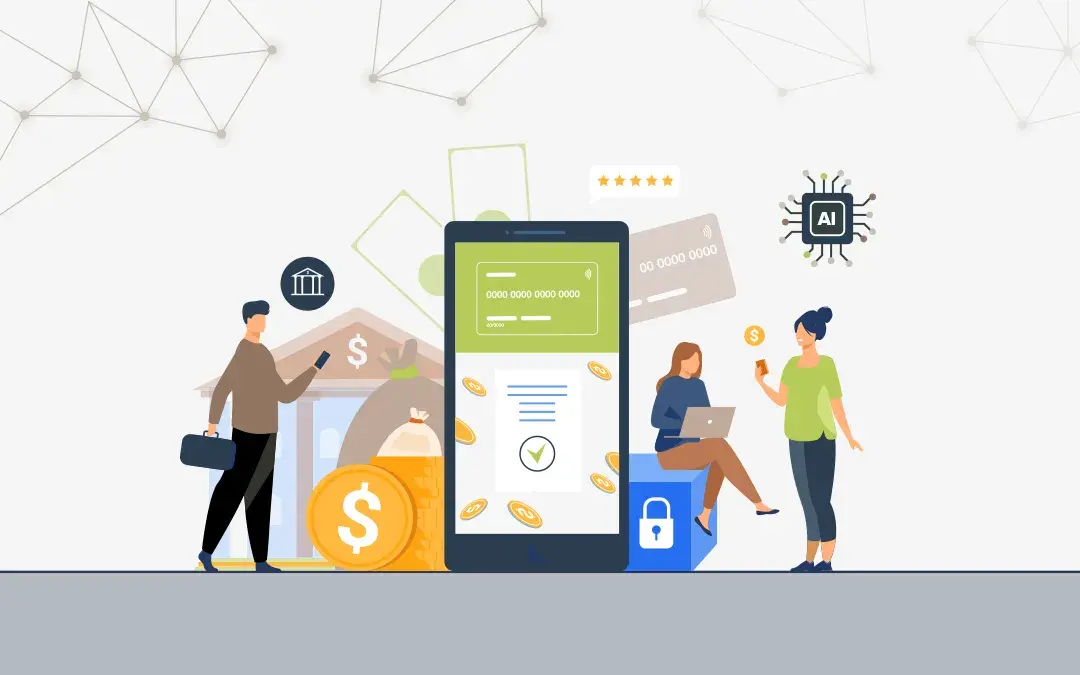With open banking leading the way, large banks, financial institutions, and aspiring third party providers are preparing to redefine the financial services. They will produce more personalized products and services catering to the financial needs of the consumers.
Open banking will inspire widespread changes in the lending market to promote innovation, provide more secure payment, and cut down cost. With the introduction of new types of third-party providers, open banking will directly address many concerns around the lending market, which tends to be complex and rigid. For instance, to avail a small personal loan, borrowers need to submit a lot of documents and suffer a long verification process.
Open banking and PSD2 will drive the market to open APIs and third-party providers – AISPs and PISPs, providing them with the means to access the vast data and offer a transformative lending experience.
Secure and instant verification of user’s data
A coherent view of the vast data will be available to lenders via bank APIs. The data can be easily used to verify the eligibility of the borrowers without the need for any physical document, which was certainly a necessity in traditional means.
A number of lending companies like Zopa have taken advantage of open banking to offer an automatic verification process. Over 50 percent of the borrowers who needed to verify their income to avail a loan with Zopa agreed to connect their bank accounts. This allowed the p2p lending company to access the customers’ financial data seamlessly.
With the implementation of the XS2A (access to accounts) under PSD2, lenders and registered third-party providers, AISPs, will be able to access consumer’s data from other financial institutions. By gathering data automatically, lenders can gain a more accurate and comprehensive view of consumer’s financials. It will reduce the friction in the process of credit scoring and the risk associated with the potential loan, offering a consolidated view of the financials. All of this will help the lenders to determine the risk for new customers with much better precision.
Faster and affordable lending experience
Open banking will herald a whole new experience for the customers in the lending market in terms of payments with Payment Initiation Service Providers (PISPs). PISPs will be able to legitimately initiate payments on behalf of consumers, eliminating the need for them to actually going to banks, and follow long and mundane processes.
With PISPs, customers will no longer need to login different bank accounts separately. They can manage their investments and returns easily without paying heavy fees to third parties who eat into already thin margins. Moreover, lower cost and convenience offered by PISP services will attract more customers in the peer to peer lending market.
Better customer outcomes
With the adoption of open banking, lenders can tap into months of transactional data from banks. The sharing of bank data through open APIs will push lenders to identify and address the needs of consumers when it comes to financial services.
In regards to ease of transactions, PISPs will be able to initiate payments on behalf of consumers, via any bank account the consumer holds. All customers will have to do is sit back and relax.
The potential benefits will go beyond the introduction of new services, altering the current processes to be more digital, less expensive, and consumer-friendly. Open banking will become the base of competition between multiple players in the lending market, resulting in improved customer outcomes.
Looking ahead
Through open banking, lenders can take a broader view of the borrower’s financial data. They can offer a low-friction credit process to consumers that have consented to share their data. Furthermore, the introduction of more and more PISPs will boost competition in the market, leading to lower costs and greater choices for customers.
Overall, the opportunity presented to the lending industry will be huge, although there might be challenges under data security and compliance. According to various surveys, it could be difficult for lenders and third-party providers to gain customer confidence thanks to the lack of limited knowledge about open banking. It could also be a challenge for them to comply with regulations like PSD2 and GDPR. Security will remain a major concern in the eyes of the customers.
Apart from compliances, open banking and PSD2 will open up new opportunities for both lenders and borrowers. A deeper understanding of this new approach will bring insights into how market players can leverage its benefits.




